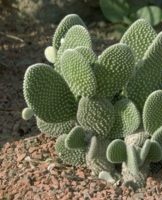Rules for planting and caring for a Chinese rose at home, trimming and shaping a bush
Caring for a Chinese rose at home should be comprehensive. To achieve good results in the cultivation of this culture, it is necessary to provide the culture with optimal humidity and temperature parameters. It is imperative to water this plant in time, apply complex fertilizers and prune. Of significant importance is the treatment of bushes from harmful insects.
Description and characteristics of the flower
The indoor Chinese rose, or hibiscus, is an evergreen shrub or tree. The plant is able to reach 2 meters. The foliage has a shiny, smooth surface. It has a dark green color and irregular edges.
The flowers have a beautiful appearance and reach a diameter of 8-14 centimeters. They can be simple or terry, depending on the type of plant. The color scheme is also different. It can be white, red, pink. There are also yellow varieties.
With proper care, flowering lasts from early spring to late autumn. Sometimes the rose is grown as a standard tree.
First steps after purchase
If purchased, the bush should be carefully examined for pests, paying special attention to the backs of the leaves. When the plant comes home, it should be immediately sprayed with a warm solution of Epin. It is recommended to transplant the culture into a new pot within 14 days.
Selection and preparation of pot and substrate
The Chinese rose needs moist, drained soil rich in organic matter. It is important that the soil is not too dry, as this will cause the development of various diseases. It is recommended to loosen the soil from time to time. This helps supply oxygen to the roots.
It is recommended to plant a Chinese rose in a wooden pot. A lightweight ceramic planter is also a good option. It is better not to use a dark container. In it, the roots can overheat, which will lead to their rotting.
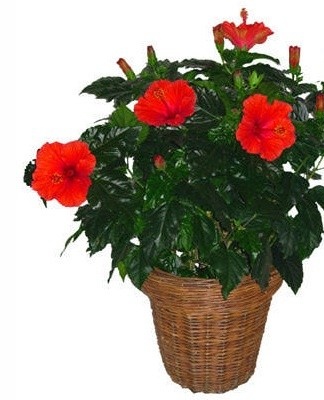
Location recommendations
It is recommended to choose a place for cultivation, taking into account the need for lighting. Hibiscus grows best on western and eastern window sills. It is also allowed to put the rose on the south side. However, in this case it is necessary to shade the bush a little to protect it from direct sunlight. It is better not to use the north window sill. In such a place there is a lack of light, which will negatively affect the flowering of the culture. If there are no other options, you will have to use additional light sources.
Maintenance Features
To successfully grow a crop, it is necessary to water it in time, prune it and apply fertilizer.
watering mode
During the active growth of the culture, it needs to be watered quite often. It should be remembered that the soil should not dry out. A drying of the topsoil of 3 centimeters is allowed. The irrigation regime is selected taking into account temperature indicators. In the summer, this should be done every other day. In the fall, the frequency of watering is reduced. In winter, 1 watering per week is sufficient.
Temperature and lighting
Adequate lighting is necessary for the normal development of the culture. To ensure normal formation of the kidneys, the sun's rays are necessary. High-quality lighting will ensure abundant and long-lasting flowering.
The optimum temperature for hibiscus is +26 degrees. In winter, this indicator is recommended to be reduced to +18 degrees. At low temperatures, the kidneys form better. If the temperature is high in winter, do not expect lush flowering.

Ambient humidity
Culture needs high humidity. Therefore, it is recommended to water the foliage with water in winter and summer. It is also allowed to use a container with wet pebbles. In this case, it is recommended to install the pot so that its bottom does not come into contact with water. Sometimes the plant needs a hot shower. This procedure helps moisturize the foliage and fight spider mites.
It is important to ensure that water does not get into the flowers and buds.
Spray
In spring and summer, hibiscus should be sprayed at intervals of 2-3 days. It is recommended to perform this procedure every day in hot weather. In this case, it is allowed to use only settled water.
Transfer
The Chinese rose grows rapidly.Therefore, it is recommended to replant young shrubs every year. It is recommended to do this in spring or summer. Adult cultures can be transplanted every 4 years. At the same time, they should change the topsoil for a new one every year.
For transplanting a culture, it is recommended to place a drain at the bottom of the container. For this purpose, it is allowed to use expanded clay or small pebbles. The flower is planted in the center of the pot. Then it is worth carefully adding soil and watering the plant.
Fertilization and feeding
Experts say that these plants are best fed with liquid fertilizers. At the same time, it is important to choose the right composition of them.
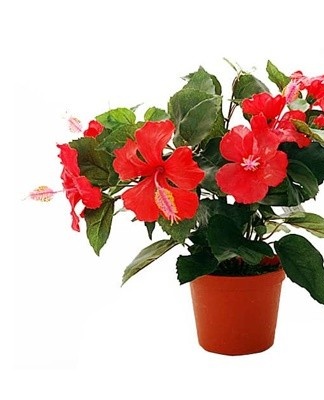
Nitrogen
It is recommended to fertilize the rose with such means using a foliar method. To do this, take 1 gram of urea and mix with 1 liter of water. After that, it is recommended to spray the culture with a spray bottle.
Potash
It is recommended to use such funds in the spring, when the active development of culture begins. Potassium is responsible for the formation of buds. The plant needs phosphorus to ensure normal root development. Therefore, experienced flower growers recommend using potassium-phosphorus products.
Complex mineral fertilizers
In the summer, it is advisable to use complex mineral preparations. We must not forget that it is recommended to feed the bushes in the evening. Before carrying out the procedure, the rose must be watered.
Trim and shape the bush
Hibiscus pruning is done in the spring. This is done shortly before the transplant. At the same time, there should be no flowers or buds on the bush.Pruning stimulates the flowering of the culture and the formation of a large number of flowering branches. At the same time, the bush itself becomes thicker and more beautiful.
During the procedure, it is worth cutting off elongated, dry and bare branches. It is recommended to shorten the rest of the shoots by half. Cut places should be treated with garden varnish. In this case, the juice should not flow from it. The cut shoots will make good cuttings. You can get new bushes from them.
To rejuvenate an adult plant, all shoots are pruned to a height of 15 centimeters. In this case, it is important to ensure that at least 1 bud remains on each branch. As young shoots actively develop, it is recommended to get rid of weakened branches. In this case, strong and healthy shoots should remain. In summer, the bushes need to be pruned again. At the same time, the formation of flower buds on regrown shoots will occur only in September. But abundant flowering will last until spring.
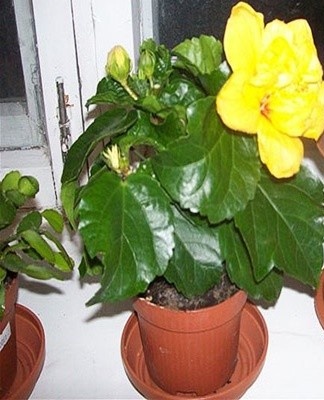
The importance of following the rules of care
Any plant needs proper care. If the recommendations are not followed, there is a risk of negative consequences. As a result, the plant will begin to hurt. The Chinese rose often suffers from poor temperature conditions. The increased dryness of the air will cause the buds to drop. Often, violation of agrotechnical recommendations leads to a complete absence of flowering, pest attacks and the development of diseases.
Common growth problems
If the rules for caring for the plant are violated, there is a risk of various troubles.
yellow leaves
If the leaves change color and become yellow or brown, this indicates a deficiency or excess of liquid.
Falling foliage
If the leaves wilt and crumble, this indicates low humidity. In such a situation, it is worth increasing the number of sprays.
falling buds
If buds fall from a Chinese rose, you can suspect too low a temperature or increased air dryness.
brown leaf tips
If the tips of the leaves turn brown, this indicates insufficient fertilization.
pests
Sometimes hibiscus is attacked by pests. Dealing with them is quite simple, the main thing is to act in time.
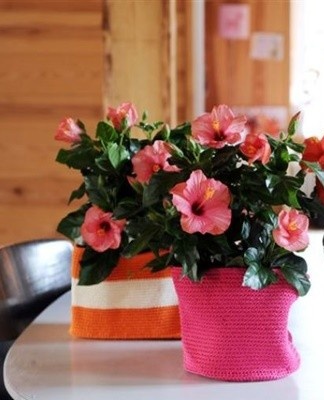
Spider
It is a small insect that infects the lower part of the leaves, covering them with cobwebs. It will be possible to identify problems with the naked eye. Mites are especially dangerous for plants that are in a room that is too dry and warm. At the first sign of trouble, the culture should be treated with soapy water. In more complex situations, insecticidal preparations cannot be removed.
Aphid
These pests cause the defeat of young branches and unopened buds. Aphids are characterized by rapid reproduction. If you do not act in time, the plant will be covered with entire colonies of pests. Spraying with sulfate-containing solutions will help control pests.
Whitefly
When a whitefly attacks a rose, leaf curling is observed. In such a situation, it will not be possible to do without chemicals - Aktara, Admiral, Bankol. When using such drugs, it is worth using gloves and ensuring regular ventilation of the room.
Shield
To cope with these pests, mechanical peeling of the foliage is necessary. It is done with a soapy sponge.Then the plant is treated with Actellik. For 1 liter of water take 1-2 milliliters of product.
Tips and tricks from experienced gardeners
To successfully grow a crop, it is important to take good care of it:
- water the plant in time;
- provide optimal temperature and humidity;
- apply fertilizers;
- perform the trimming.
Chinese rose is a popular ornamental plant that allows you to perfectly decorate the site. To successfully cultivate it, it is necessary to provide it with comprehensive care.

